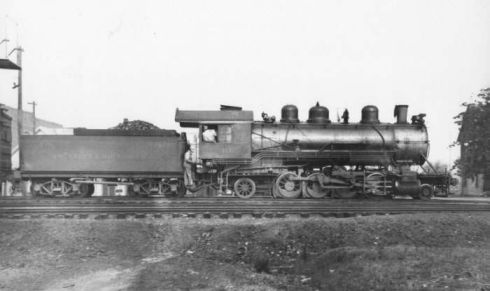Aberdeen & Rockfish Railroad Company
Construction on the standard-gauge line began immediately, and by June 1893 the railroad had reached "Buffalo," nine miles from Aberdeen. Over the next few years the main line pushed to Endon in an area later included in Fort Bragg at the headwaters of Rockfish Creek. On 30 June 1897 a branch line arrived in Raeford, where on the same day John Blue and railroad surveyor Hector Smith laid out Main Street.
Over the years, the Aberdeen & Rockfish was one of the more innovative railroads. It was among the first to use gasoline-powered rail cars to carry passengers (1921), to provide door-to-door delivery for package freight (1931), to convert to diesel power for freight trains (1947), to use radio for train operations (1966), and to computerize accounting (1967). In 1987 the A&R acquired a branch line from CSX between Dunn and Erwin and formed the Dunn & Erwin Railway, which served a large denim mill in Erwin. A short time later, a second line opened at Bennettsville, S.C.; called the Pee Dee River Railway, it served a paper mill and board plant. The A&R also provided service to a chemical resin plant, a cosmetics company, a newspaper, a scrap dealer, and a variety of other shippers. These three lines made up the A&R of the 1990s until the Dunn-Erwin line shut down in 1998.
At the beginning of the twenty-first century, the family of founder John Blue still maintained control of the A&R, one of the most profitable short lines operating in the United States. Continuing to serve the south-central region of North Carolina and businesses in Moore, Hoke, and Cumberland Counties, it carried such commodities as industrial chemicals, coal, oil, scrap metal, newsprint, fertilizer, lumber and building materials, plastics, and steel beams. According to the Railway Association of North Carolina, the A&R operates 46 miles of track, employs about 30 people, and moves 4,000 carloads (385,000 tons) of freight a year. It has connections with CSX, the Norfolk Southern Railroad, and three short-line carriers, as well as an intermodal truck-to-rail and rail-to-truck system. The company's motto is "The Road of Personal Service."
Reference:
Jim Wrinn and Edward Lewis, The Road of Personal Service: A Centennial History (1992).
Additional Resources:
Thompson, C.G. "Here's One Railroad That Operates at Profit: The 51 Miles of Aberdeen & Rockfish Not in Railway Crisis Picture." The News and Observer [Raleigh, N.C.]. November 20, 1938. "Railroads - North Carolina" Vertical Reference File, Government and Heritage Library, North Carolina.
Image Credit:
A&R early power, #:4-6-0 #20. Image available from the Aberdeen & Rockfish Railroad Company. Available from http://www.aberdeen-rockfish.com/html/photo_gallery.html (accessed June 18, 2012).
1 January 2006 | Lewis, Edward A.
